Mammoth Hot Springs, Main Terrace Area
Page 1 2
The next higher level on Terrace Mountain is the Main Terrace Area, encompassing the Main Springs, Blue Spring, the New Blue Springs, Summit Basin Spring, the Jupiter Springs, Naiad Spring, Mound Spring, the Trail Springs, and Canary Spring. According to this also some spring areas have been named as terraces in their own right. Mound Terrace has been built up by Naiad Spring and Mound Spring. It represents the northeastern corner of Main Terrace and shows a clearly lower top level. Naiad Spring, located on top of the eastern face of Mound Terrace, is intermittently active at least since 1878. Since the 1970s no discharge has been observed, though.
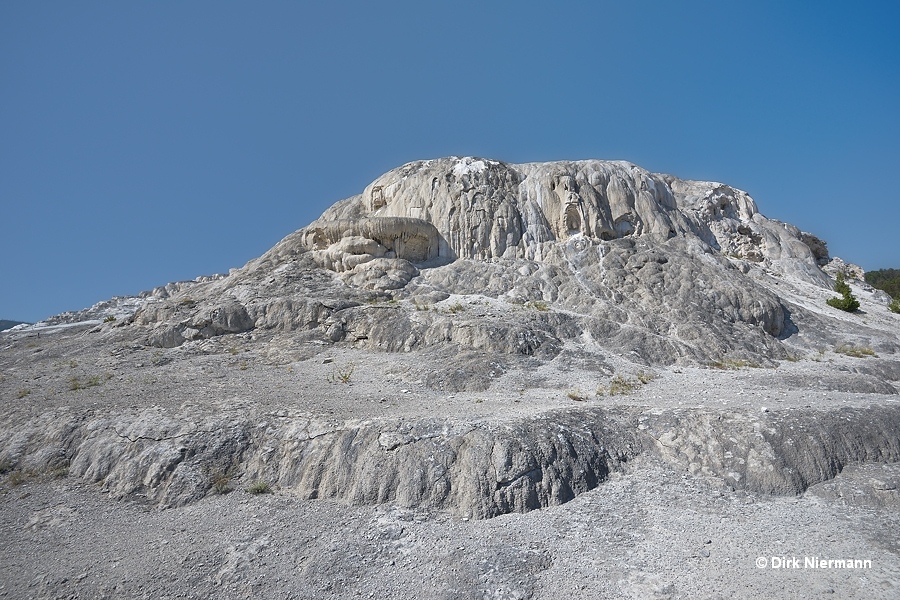
As can be seen in a historical photo by William H. Jackson, around 1878 the hot water had formed a huge pond with a more than 2 m (7 feet) high drop wall on the west side of Mound Terrace, entirely decorated with a curtain of impressive stalactites and called "The Frozen Waterfall". Not long and it was swallowed by the growing terrace, as so many other features before and thereafter. Also within the western section of Mound Terrace, half-way upslope above the boardwalk, Mound Spring emerged around 2008 and formed an impressive set of terracettes since then.
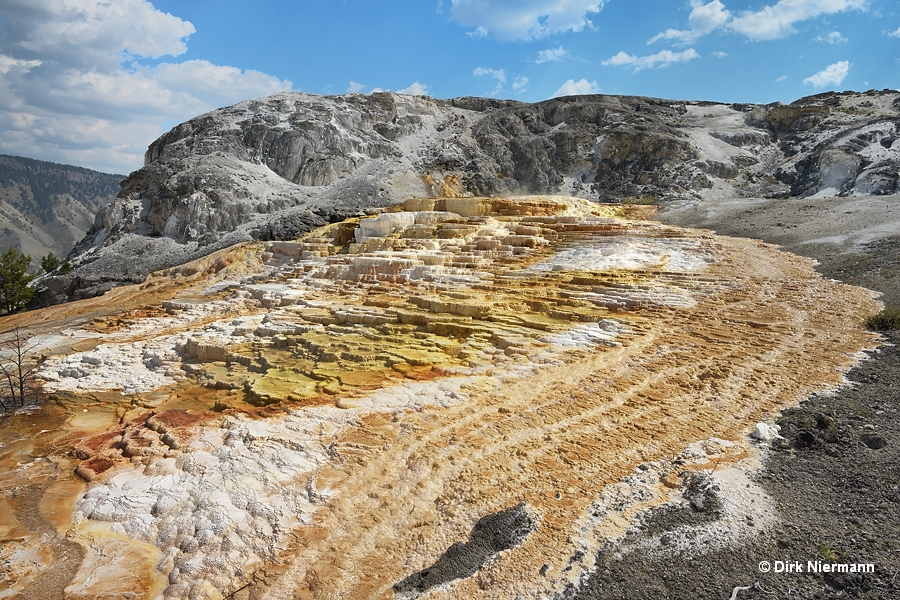
Since Mound Spring has been continuously flowing for more than 15 years now, it is an excellent object to study the growing of terracette structures from the scratch over a longer period of time. Until 2024 Mound has made great progress in establishing a complete new sub-terrace on a level halfway up the slopes of Mound and Main Terraces. It becomes clearly visible that higher terracettes, formed by hotter, more mineral enriched water, have growth priority over lower ones, thus creating a steep escarpment.
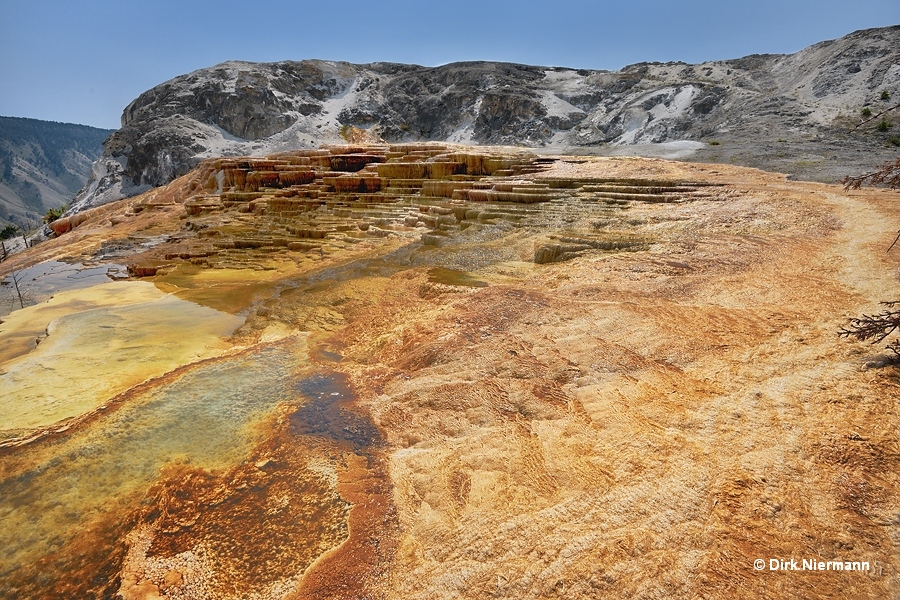
From the boardwalk in front of Mound Spring it is getting increasingly more difficult to catch a glimpse of Mound's vents. In the early years often a few feet high artesian or carbon dioxide driven fountains rising out of the uppermost pool could be spotted, an event that is not uncommon with springs on the terraces.
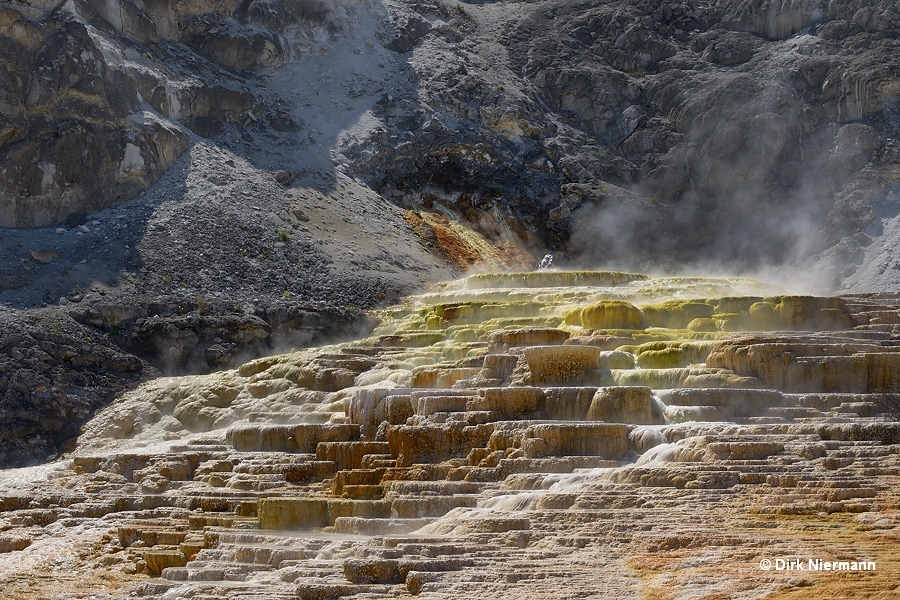
After the terrace structure has significantly grown in height and more so in length, the stairs climbing the top level of Main Terrace are the preferred viewpoint for a look into the pools and at the vents, albeit the distance is quite huge.
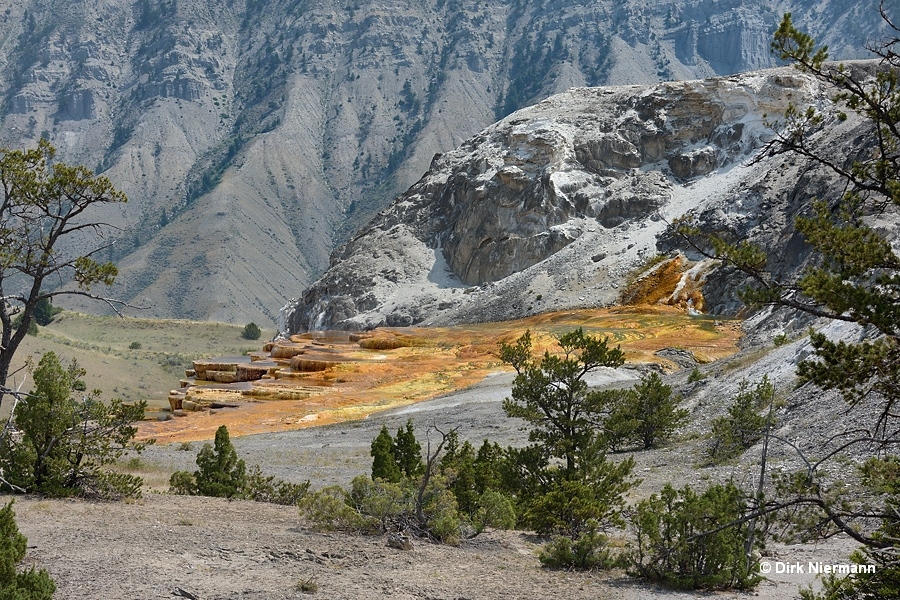
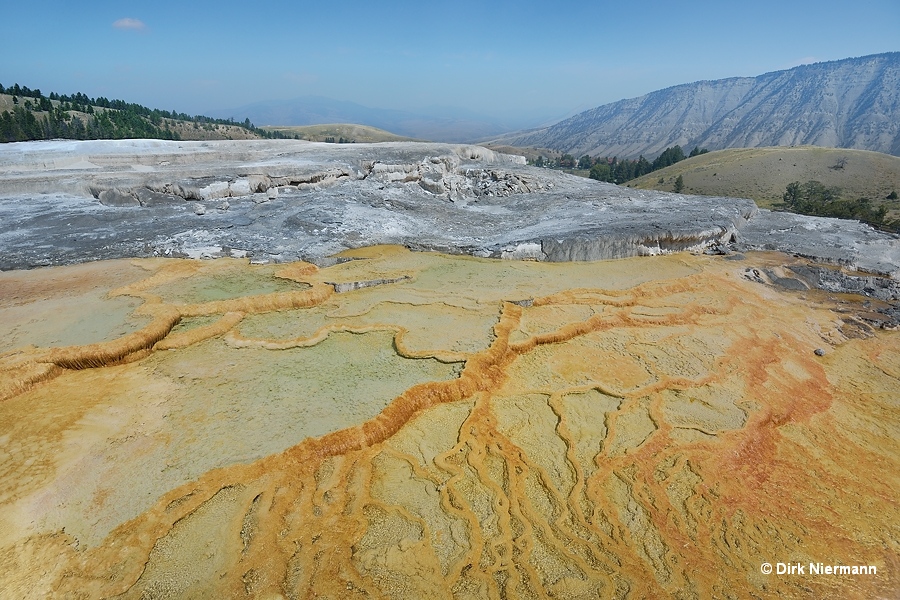
Jupiter Terrace is attached to Mound Terrace in the southeast and at the same time separated from it by a fissure. Accordingly, springs north of the fissure are belonging to Mound Terrace (Naiad Spring and Mound Spring), while springs south of the fissure are called Jupiter Springs. They are completely dry since 1998, but already after 1995 Jupiter Springs never again reached the high discharge seen from 1920 to 1935 and from 1953 to 1995 when major parts of the Jupiter Terrace were deposited.
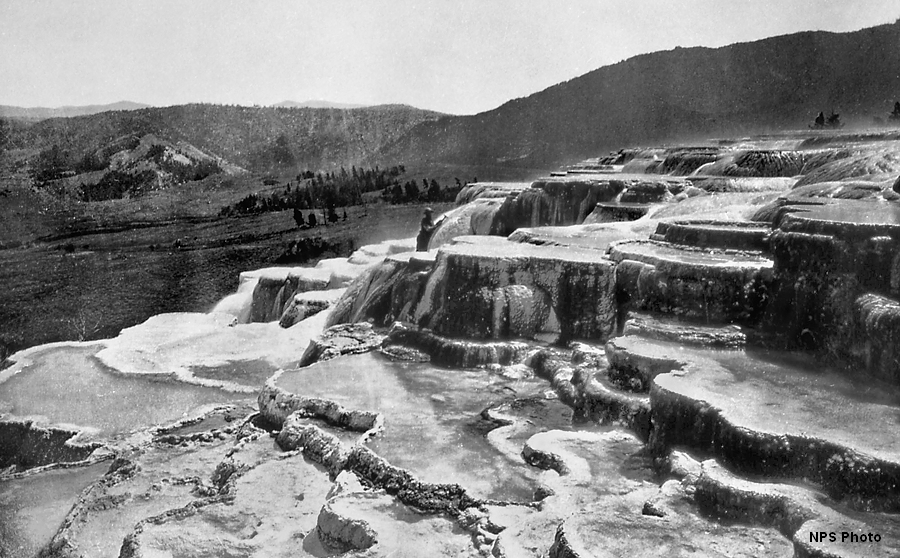
A separate boardwalk still leads to the east face of Jupiter Terrace, where the deterioration of the old terracette formations can be sighted.
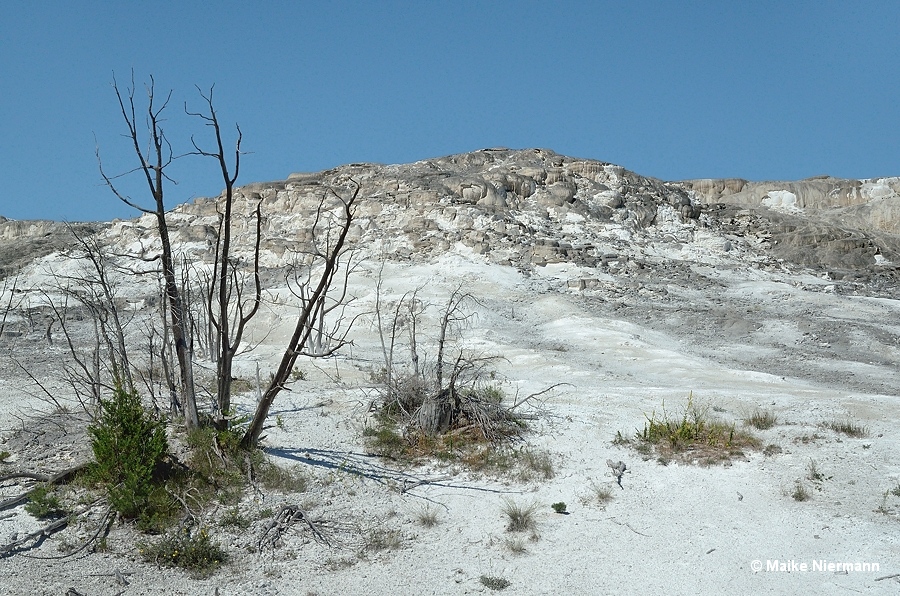
From the level of Minerva Terrace stairs climb up to the level of Main Terrace and beyond, where the trail runs along the elevated, eastern rim of a travertine terrace called The Esplanade. It is named for the panoramic view over Main-, Jupiter- and Mound Terrace and continues (without trail) northwestward to tower over Minerva Terrace, too. The Esplanade has no historical record of flowing thermal water and is regarded as part of Prospect Terrace, the next higher level on Terrace Mountain. Looking down on the northwest corner of Main Terrace, pools and terracettes of New Blue Spring catch the eye.
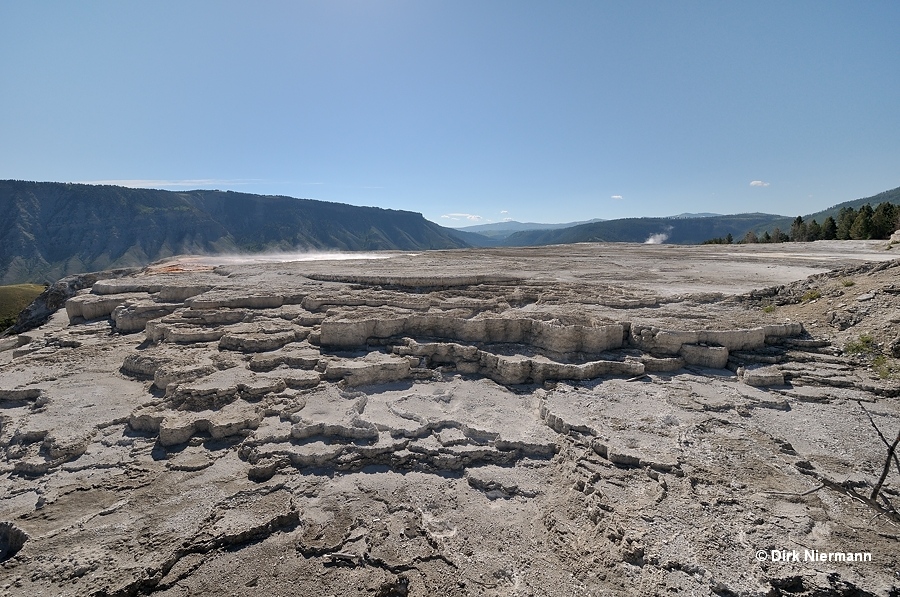
Actually, New Blue Spring consists of several different vents, and the position of the pool shifts from time to time accordingly. The original Blue Spring, described by the Hayden expedition in 1872, was located more or less at the same position of the current New Blue Springs. But the original one ceased flowing in 1889, and another spring near the center of Main Terrace was named Blue Spring instead. Later springs at the former position sprang into life and they were called New Blue Springs. Up until 2005 New Blue Spring flowed high volumes of thermal water, cascading down the brink and continuously forming or extending terracettes. But thereafter the discharge dropped and the water has been confined to some smaller pools on top level only. The next picture shows a spring located near the boundary to Jupiter Terrace. In most years this spring is empty.
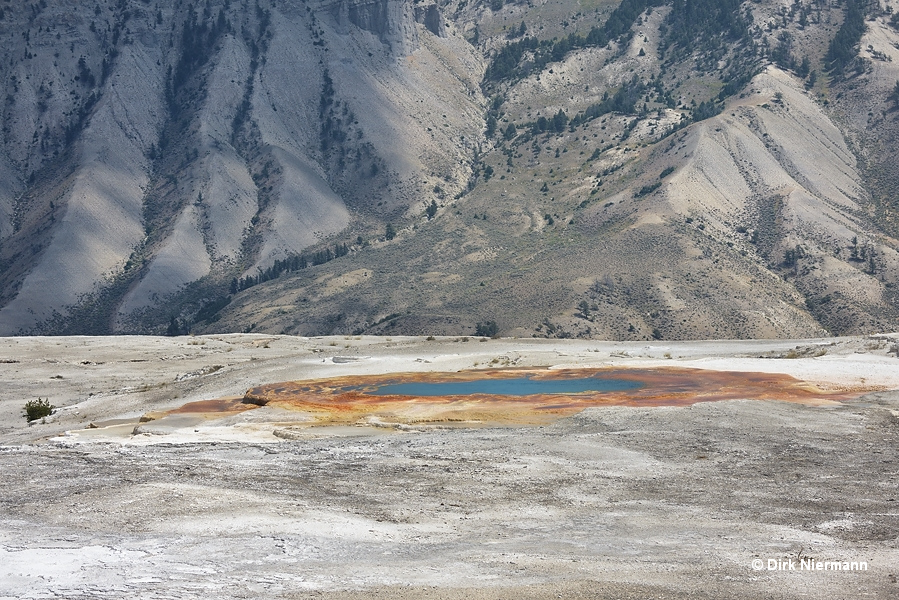
Southwest of the New Blue Springs one of the dry vents of Summit Basin Spring is still visible. This spring had ceased flowing in 1872 and became a top attraction when its two large pools refilled in 1936. In his New Guide from 1936 Jack E. Haynes wrote: "Jupiter Terrace Parking Area (Mileage 6.5) affords a splendid view of Summit Basin Spring." However, the excitement was short-lived because the spring already dried up again at the end of 1937. Although at that time the name Summit Basin Spring had been officially used in the superintendents' reports, the sign at the current overlook directly in front of the old vent, reading "New Blue Spring", seems to allocate it now to the New Blue Springs.
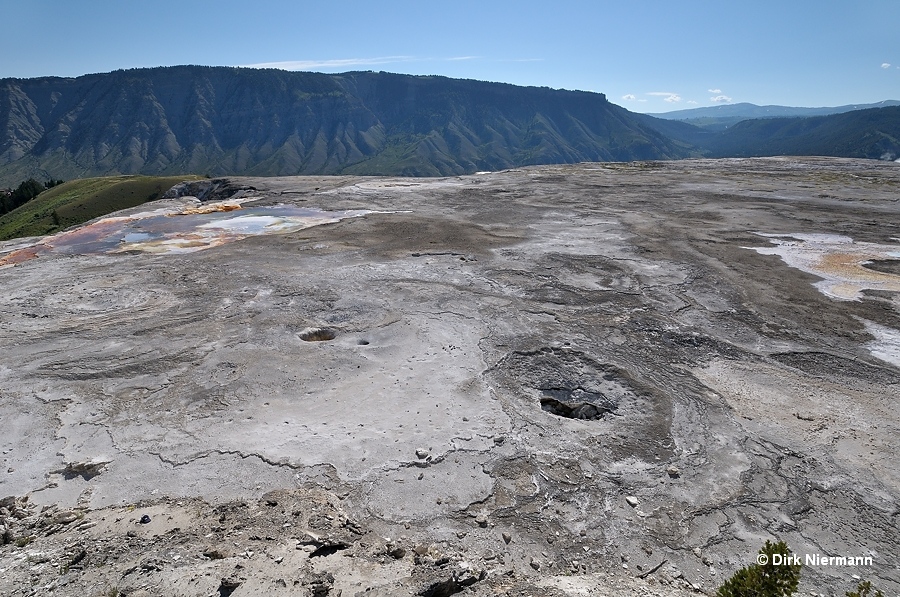
The boardwalk proceeds along The Esplanade and passes the fissure ridge of Cupid Spring, which is likewise part of the higher Prospect Terrace. Cupid Spring was firstly observed in 1931 and its last noteworthy period of activity ceased in the 1990s. From 2010 onwards, the Cupid Fissure Ridge showed new discharge, which is getting stronger from year to year.
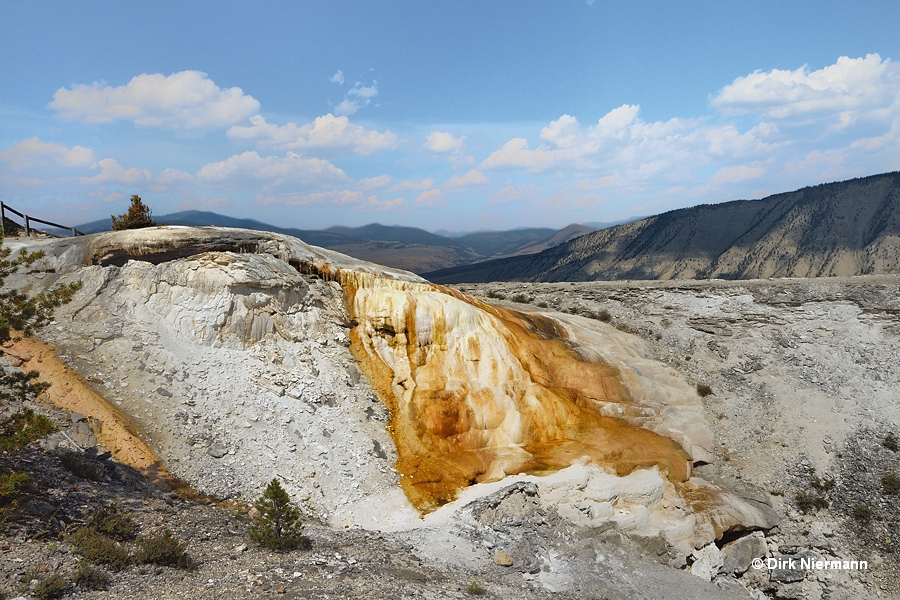
Page 1 2